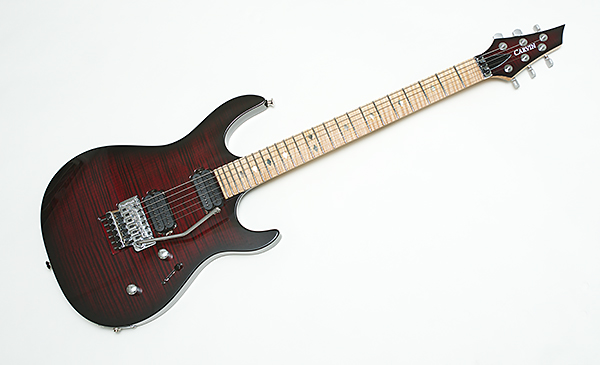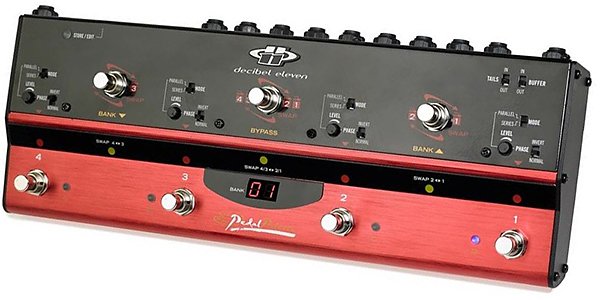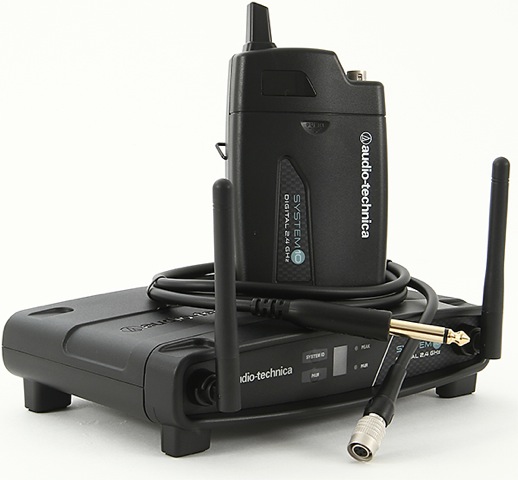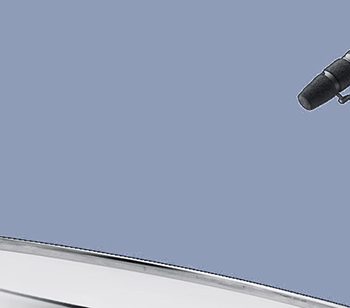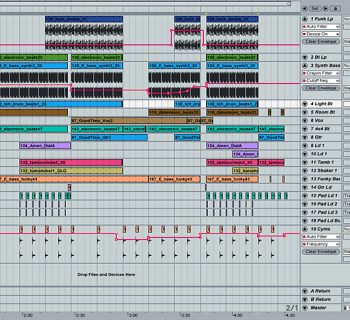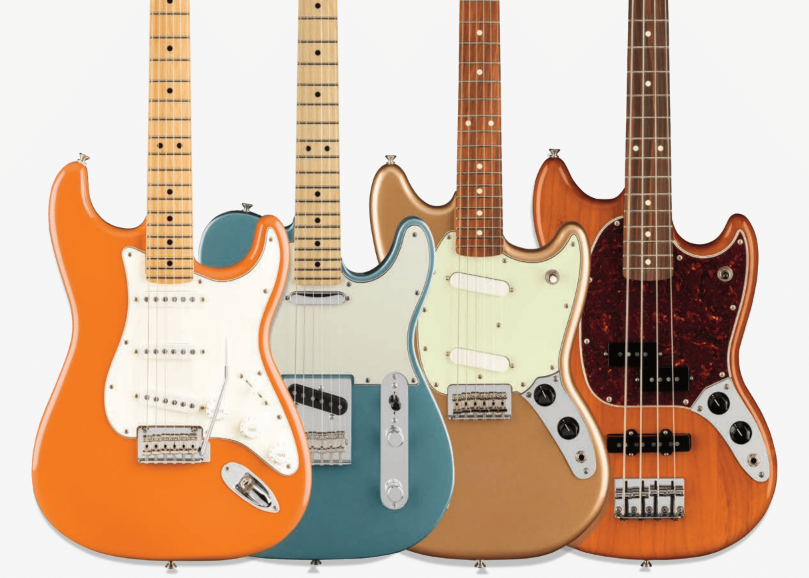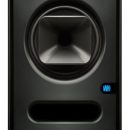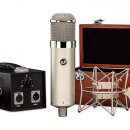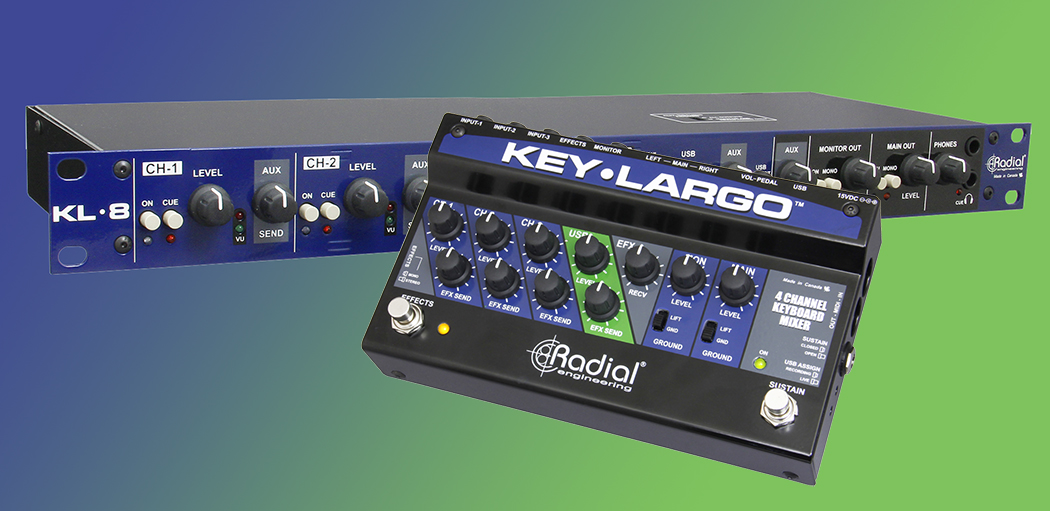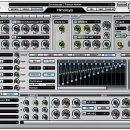 From childhood we are taught that if something seems too good to be true, it probably is. Well, the Carvin DC600C not only breaks that golden rule, but it smashes it to smithereens. There simply is no faulting this instrument if you demand a premium, American made, dual humbucker, shred machine that covers a wide range of tonal variety with a neck that feels, simply, to die for.
From childhood we are taught that if something seems too good to be true, it probably is. Well, the Carvin DC600C not only breaks that golden rule, but it smashes it to smithereens. There simply is no faulting this instrument if you demand a premium, American made, dual humbucker, shred machine that covers a wide range of tonal variety with a neck that feels, simply, to die for.
By way of Carvin’s online (or catalog) custom shop, you can build a DC600C exactly the way you want it – and so we did! With a plethora of options and finishes to choose from, the DC600C was Carvin’s response to customers who longed for the greatness of the popular DC700 seven-string model in a six-string configuration. What they came up with, however, was more than the sum of the parts. The DC600C is an instrument that blurs the line between familiar, premium “classics” such as the Suhr Modern and the Jackson Soloist, embodying the finest attributes of these instruments and then infusing it with the Carvin mojo that has been setting their latest guitars on fire.
We have played and owned a variety of Carvin guitars for years, and the latest guitars they have sent us for review have been stunners in every way. However, what we were not prepared for in this instance was a guitar that not only rivals, but surpasses, guitars that sell for two to three times its price. The DC600C is that good, and a panel comprised of both editors as well as some of our pro musician friends confirms these feelings unanimously.
Quite simply, if modern Soloist-style guitars are your thing, this is probably as good as you’ll get at any price.
Features
The DC600C in this review was built to our exact specifications via Carvin’s custom shop, so naturally the feature set struck us as being just right for this type of rock guitar.
The DC600C is a double cutaway Strat-style (Soloist-style, technically) guitar featuring 24-fret, neck-through construction. If you love the looks of the Carvin Contour 66 but wished for a 24-fret version, this is basically that guitar albeit with a neck-through build instead of bolt-on.

Our DC600C was finished in a stunning Deep Black Cherry Flame paint scheme on top of a 4A flamed maple top. We chose the default body wood: solid alder, known for its light weight and resonant tone, though numerous other woods are available options. Our headstock shape of choice featured a pointed headstock design that added to the guitar’s aggressive attitude (the headstock was painted to match the body color, too, and Carvin has a few different headstock designs). The gorgeous, one piece, flamed maple neck—and we do mean gorgeous, was treated with a Tung oil finish, and the maple fretboard featured diamond shaped, mother of pearl inlays. Additional neck specs: 25” scale, 1.69" wide at the nut, 2.22" wide at the 24th fret. We must have been in a “skinny frets need not apply” mood the day we configured the guitar, because we chose 6100, stainless steel, jumbo frets.
Additional hardware included Sperzel locking tuners, a genuine Floyd Rose tremolo system with our preferred “screw in” style arm, as well as factory-installed strap locks. It should be noted that around the time we configured the guitar, Carvin introduced their own Carvin-machined locking tuners, which are now standard on these guitars. The love-fest that began with this review instrument led to another editor ordering one, and that guitar included the new Carvin-manufactured locking tuners. They are virtually indistinguishable from the familiar Sperzel tuners, and feature a 19:1 tuning ratio.
In the electronics department, our review axe was loaded with the standard Carvin C22 Bridge and Neck humbuckers (C22B and C22J respectively), a standard five-way blade switch, and single volume and tone controls.
If six strings isn’t enough for you, the DC700 adds another string, and the DC800 takes things over the top with an eight-string electric guitar. And don’t forget—Carvin guitars are all made to order custom (unless you buy from their inventory of ready-to-ship instruments, which changes weekly), so there are numerous options available if you don’t love everything about our test specs.
The options we specifically chose in this configuration were as follows: Locking nut, black gloss back and sides, Deep Cherry over Flame finish with blackburst edges, flamed maple neck, tung oil neck finish, black mother of pearl inlays, stainless steel jumbo frets, and Dunlop straplocks.
Usability
Let’s cut right to the chase here—our DC600C guitar has some of the best playability of any guitar we have ever tried, bar none.
Between the twelve-inch radius, jumbo frets, and smooth neck heel allowing access to upper registers, the neck was quite simply a dream come true. The supplied .010-.046 gauge strings felt quite slack, and if you told us these strings were two gauges lighter, we might have believed you! There was simply never a feeling of fighting this guitar. It did indeed play itself (to coin the old cliché). The Tung oil finish offered a natural feel under the fingers and never got sticky or greasy the way some lacquered finishes tend to do.

The 6100 jumbo frets are indeed large, but they never left us with the feeling we were “jumping hurdles.” Wide bends and two-handed tapping and scale runs came effortlessly. In fact, the only challenge with this guitar was not being tempted to play everything too fast!
Setup from the factory was nothing shy of perfection: the neck was straight, the action was set in the “sweet spot” (by that we mean super low) and intonation was accurate throughout multiple positions of the fretboard. Fretworks was superb, with no rough edges nor “choke out” on bent notes due to high or improperly seated frets.
The electronics were intentionally straightforward, and anyone familiar with the standard five-way blade switch will no doubt feel at home switching between full on humbucker and split or in-between tones. The placement of the toggle was close enough to our picking hand to allow changes with the flick of our pinky and the volume pot was also situated close enough to execute “pinky swells.”
The Floyd Rose bridge and locking nut came set up perfectly from the factory (i.e. just the right amount of tension) and much to our delight, the body is routed enough to pull up a few steps on the bar allowing you to invoke your inner Steve Vai. Of course, the expectation with a Floyd Rose system is superior tuning stability, but our DC600C is something else altogether! This guitar was shipped from California to our New Jersey office and arrived in perfect tune! And we mean perfect, not even off by a single cent. It was then extensively evaluated by our staff (which included many whammy bar flights of fancy) and even used in a live band setting and not once did we EVER have to tune this guitar – amazing! But just for grins (and a reality check), we twisted a few of the fine tuners to make sure they worked.
We also loved the low-profile Floyd design here, where the fine tuners are angled to the butt of the guitar instead of facing front/top, where you are more likely to inadvertently hit one of them. The screw-in tremolo arm worked great and it was simple to adjust the desired amount of tension.
Sound
So it’s prettier than ten movie stars, plays like a dream, and even smells good! But how does it sound? As we like to do with all of our evaluation guitars, we first strummed our DC600C unplugged to reveal the guitars inherent acoustic properties. What we heard can be described as “warm and zingy” and quite frankly the “zingy” had us concerned that the guitar may be a bit thin and bright for our tastes.
Being the modern high gain fanatics that we are, we fired up our trusty Peavey 6505+ with the gain set to around 7 on the dial (translation: this is a lot of gain!). Yes, it is a bright sounding guitar, but we are not talking “ice pick to the forehead” bright. This is the good kind of bright. The DC600C has a shimmering, crystal clear top end that never fatigues the ear. This is offset nicely by the guitar’s low end which is super tight, but never so bloated that it loses focus. The midrange is right where it should be, that is to say, not too “honky” and not scooped.
All of this adds up to a guitar that remains clear under high gain when either in the bridge or neck positions. Shredders will love this clarity when soloing – the top end and upper mids allow the notes to cut through and not turn to blurry mush. The neck pickup gives up that coveted “violin” tone that sings for days, not to mention the combination of neck-through construction and direct-mounted pickups that enhance sustain.
Fast picked notes track super well. In fact, we swear this guitar made us all sound like better pickers than we really are! In this high gain setting, the DC600C covered everything we threw at it including early Metallica riffs and Vinnie Moore style arpeggios.
Dialing back the gain a bit on the Peavey, the guitar gave up some convincing early Van Halen tones: bright and crunchy. From this tonal setting you can venture into AC/DC or Zeppelin territory or even your favorite Hair Metal band (Ratt or Dokken? In the bag!).
Moving over to our Rivera R212, we explored the guitar’s clean tones and again the DC600C did not disappoint. The bridge pickup rings out with a certain authority that reminded us of some of the lower output PAF style pickups we have in our own guitars. The neck pickup has a bit of chime that works well with Hendrix style chord work or even Jazz runs. Positions 4 and 5 have that great “quack” tone that works well for ‘70s disco or anything Nile Rodgers ever appeared on! Add a Tube Screamer-style overdrive in this clean setting and the DC600C purrs like a kitten in low gain heat!
As this guitar made its way through multiple editors’ hands, we confirmed its divine rock tone through an ENGL Powerball II and Bogner Ecstasy 20th Anniversary rig. Again, smooth sailing, with killer tones that were bright without the pain, and great note clarity, even when strumming complex chord voicings through high gain.
We frequently treat our new guitars as platforms for installing our favorite aftermarket pickups, but as with the Carvin California CT624 we reviewed and ended up purchasing, the Carvin humbuckers are keepers in this guitar. They simply sound sublime.
Documentation and Product Support
Typically, guitars ship with little (if any) documentation. However, the DC600C contains some superbly crafted documentation detailing in layman’s terms how to accomplish certain fine tune adjustments such as truss rod, intonation, pickup height, and how to change strings with the Sperzel tuners… and that’s just naming a few.
As simple and routine as some may think these adjustments are, even accomplished players sometimes need the “mystique” removed. Also included are the necessary tools (Allen wrenches etc.), and a Carvin brochure so that you can begin spec’ing out your next custom guitar.

Price
Our particular custom DC600C brought us to roughly a $1,700 price point, which was discounted further by a $100 online discount that was applied at checkout, and it included the Carvin HC10 Black Tolex hardshell case.
$1,600 for a guitar as feature rich and expertly crafted as the DC600C is, quite frankly, nothing shy of the deal of the century. We’ll take a pair of these over certain boutique beauties any day, or pocket the extra cash for another amp.
Contact Information
Evaluation Short-List
Suhr Modern
Jackson Soloist
Charvel So-Cal Style 1

